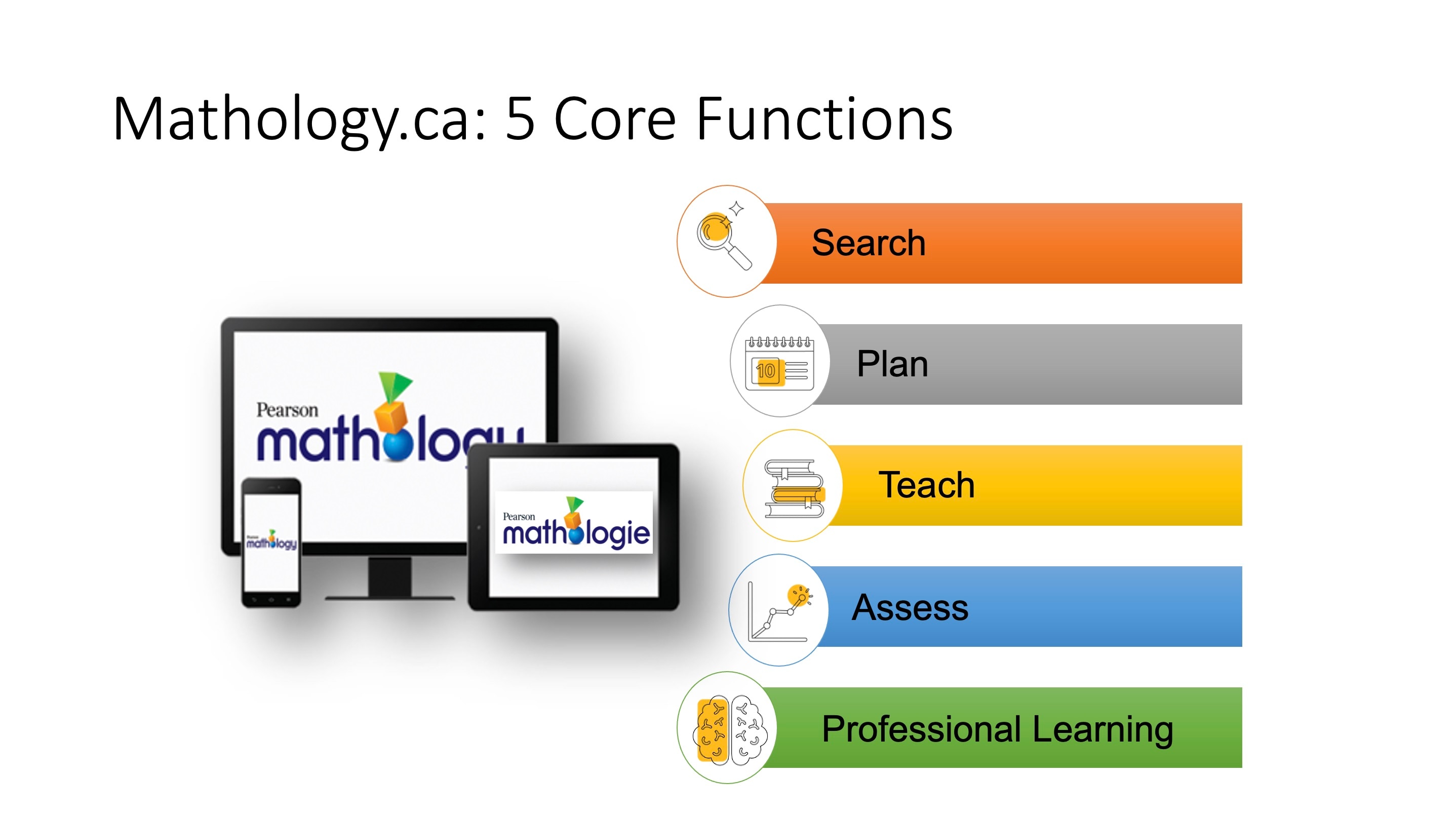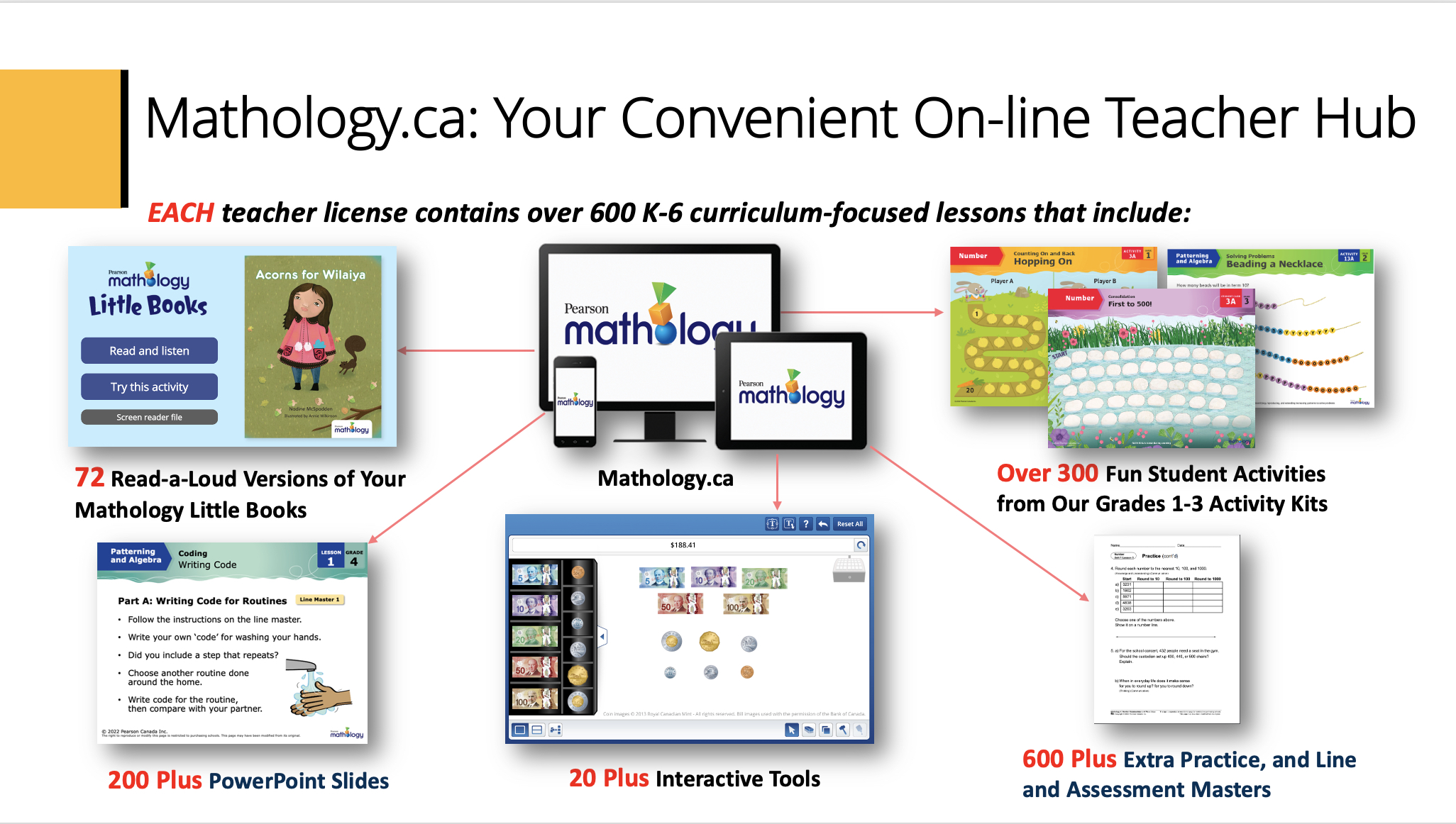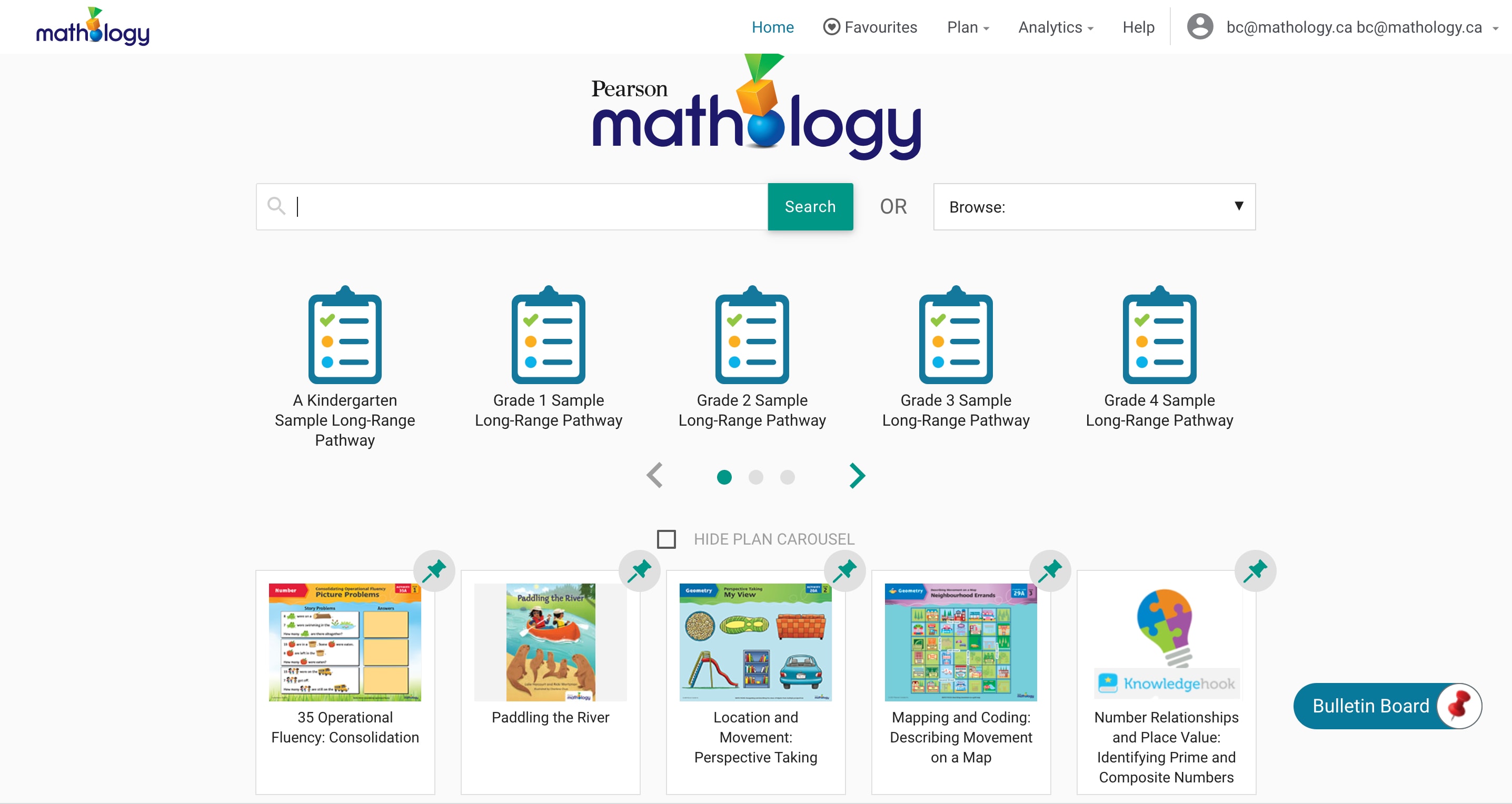Math can be an anxiety-ridden topic for many teachers and students. Add in provincial curriculum changes, classes filled with students at varying levels of math learning, and multiple shifts between in-class and online learning, and meeting all students' math needs can seem impossible.
Christine Chea, Director, of Strategy, Planning, and International Product Management, and Jeff Adams, Director of Digital Solutions, K-12, are part of the Pearson team working to help teachers address issues around teaching math. Their answer is Mathology.ca (and Mathologie.ca)—an online teacher hub for the Mathology resource that streamlines planning, teaching, assessing, and professional learning in one convenient place, saving teachers time.
As Chea explains, Mathology.ca is an online resource built on one core question: “How could we improve the math teaching journey for teachers, recognizing all of the pain points that they were feeling along the way?”
Teachers say those pain points include:
- Time constraints around planning for lessons. Teachers spend a lot of time planning, preparing and finding the right lesson content or activities to engage and meet the particular needs of their students.
- Struggling to meet all of the curriculum requirements in a given year and find materials to cover that curriculum.
- Supporting students in a classroom with a wide diversity of math understanding.
- Managing classrooms where teachers need to meaningfully engage all students while instructing small groups or spending time with individual students.

Adding to that list, teachers also say they want to move away from lugging around large math binders that can feel overwhelming and too linear.
“Learning about what was time-consuming and challenging for teachers started the development of Mathology.ca,” explains Chea.
After hundreds of hours of research, discussions and brainstorming, she says the Pearson team felt a digital platform would be the best way to address some of the frustrations and challenges facing teachers when it comes to teaching Math.

As a teacher, Mathology.ca helps you:
- Search for high-quality lessons within Pearson Mathology or add your favourite lessons
- Create lesson plans or use our yearly plans
- Teach using Mathology Activity Cards and Mathology Little Books, as well as other included digital assets and tools
- Assess and track students with a simple-to-use, practical, and powerful assessment tool
- Access short, in-the-moment professional learning videos anytime, anywhere
Mathologie.ca is also available for French classrooms, and (French teachers will appreciate this) the program has been adapted for French classrooms and not simply translated into French.

Ongoing Teacher-Led Improvements
Jeff Adams, Pearson’s Director of Digital Solutions, K-12, explains that Mathology.ca is a direct result of Pearson’s efforts to use constant feedback and research to fuel Mathology’s ongoing development.
In both English and French classrooms, teachers like you consistently share their Mathology experiences with our team. They also share the struggles of teaching math in an era of online learning, increasing learning gaps and decreasing time for professional learning.
From curriculum-focused lessons and pre-made lesson plans to interactive activities and a powerful assessment tool, Mathology.ca is designed to help address these issues by simplifying math teaching, saving time, and increasing teacher and student confidence and proficiency.
“Since the first release in 2019, we continue to listen to teachers, consultants, and others as you ask for new features, options, and changes,” explains Adams. “Recently, that feedback has resulted in a new language filter in the search, the ability to set a default grade, adding Teams and Google Classroom sharing links, and the ability for administrators to move a classroom to another teacher.”
Jeff Adams
Director of Digital Solutions, K-12, Pearson
These new features help teachers spend less time planning and better understand exactly what each of their students needs for successful math learning. Going forward, the growth and development of Mathology.ca will continue to be driven by teacher feedback and requests.
Here are some examples of how teachers are currently using Mathology.ca and how it’s helping them and their students.
Teacher Talk: Support for Every Step of the Math Learning Process
Sara Brown: Thames Valley District School Board, Ontario
Support for New Curriculum and EQAO Testing
Grade three teacher Sara Brown has been teaching for 26 years and using Mathology.ca for two of those years. As she explains, “Nothing I’ve used ever really covered everything the way that Mathology.ca does. It’s start, middle, end—it’s the whole thing. Problem solving, lessons, the teaching, the terminology, all of that is incorporated in Mathology.ca.”
Brown loves that Mathology.ca’s planning tools include provincial curriculum correlations and yearly lesson plans based on the curriculum that teachers can use or adapt.

Sara Brown’s students creating and following a dance using code from a Mathology.ca lesson. They were introduced to loops to show repeated steps in a dance.
After being through a couple of curriculum changes over her career, Brown knows that it takes time for textbooks to be updated with the changes, leaving teachers to comb through the curriculum to see what’s new or different. Teachers also spend hours scouring Teachers Pay Teachers or reaching out to colleagues for activities and resources that reflect and cover those changes.
But since starting to use Mathology.ca, Brown says she can breathe easy knowing with Mathology.ca there is complete curriculum coverage and the curriculum is always entirely up-to-date and covered in the included lessons, activities, and resources.
She follows the yearly lesson plans, helping her ensure she covers all the necessary concepts to get students ready for Ontario’s grade three EQAO Math testing in May.
For example, before Mathology.ca, she couldn’t find a grade three lesson that covered ratio anywhere, and she had never taught that concept to grade three students. “But now, it’s right there in Mathology.ca.”Start-to-Finish Math Teaching Support
Start-to-Finish Math Teaching Support
In addition to helping with curriculum coverage and preparing students for provincial math testing, Brown says Mathology.ca supports each step of math instruction. From lessons and assessments to activities and professional learning Brown says everything a teacher needs is right there in the resource.
She loves the activities that open each lesson because they are so detailed, while the group work helps her encourage discussions. Her students get excited about the games and online Mathology Little Books.
When it comes to supporting students while also learning professionally, she says the consolidation piece is particularly helpful because it outlines what teachers should look for in assessments and explains terminology.
Even as an experienced teacher, Brown says those tools come in handy. For example, Brown says “Tree Diagram” was a term she and many other grade three teachers hadn’t heard before, but it was all explained in the lesson.
Whether you’re new or experienced, Brown says Mathology.ca is a complete math resource for all teachers (and their students.)
“Nothing I’ve used ever really covered everything the way that Mathology.ca does.”
Sara Brown
Grade 3 Teacher, Thames Valley District School Board
Ben Porter: Toronto District School Board
Solving a Different Kind of Math Problem
Grade five and six teacher Ben Porter faced significant math-teaching challenges before he started using Mathology.ca with his Toronto District School Board students.
Ontario had recently rolled out an updated math curriculum. His district had shifted to integrate special education students into all classrooms. And students were returning to school after several lengthy online learning sessions.
There were wide gaps in math learning, which meant he was teaching students at four different levels of math understanding on any given day. While he wanted to differentiate and meet students’ needs, he also wanted to avoid stigmatizing students by using different textbooks, resources, and activities.
His desk was often piled high with teacher guides and endless photocopies of resources, and his time stretched thin as he looked for lesson materials.

Differentiated Math Made Easy
Porter says Mathology.ca changed all of that. Now he has one core resource where he can assess students’ math understanding on Pearsons’ Learning Progression. Plus he can follow the new curriculum, plan lessons quickly and even share differentiated resources with students without making them feel they’ve been singled out.
For example, Porter says Mathology.ca’s formative assessments helped him quickly see that many of his grade six students hadn’t learned geometry or measurements after a year where they’d had five teachers and a long stretch of online learning.
Using Mathology.ca’s yearly lesson plans he can find lessons from different grade levels and shift them around to create a lesson schedule that works for his specific students. He says that might look like starting a lesson using the first two grade five lessons because the grade six students need to catch up on gaps in their learning. And then the next lesson, he might break the class into thirds where each group is working on a different lesson.
“With Mathology.ca, I can zip through most of the expectations and send links to the practice questions, line masters, or anything I need for the different kids, and then also send a copy to my educational assistant who helps out with some of the kids,” explains Porter.
Building On Past Learning
He says the online resources in Mathology.ca, such as practice questions, manipulatives, games, and black line masters help him save time and keep students engaged in their math learning—especially now that his school board has moved to a one-to-one ratio of laptops to students.
“Mathology.ca also does a really good job connecting different aspects and strengths of math. Everything used to be in very different silos and I would have to make the connections for them. Now, for instance, when we're doing coding they keep referencing geometry and measurement concepts that we've done already. So we're learning two or three strengths of math all the time, which I think is really great!”
“Whoever is planning this is making sure everything we're learning is connecting to other strands.”
“Mathology.ca also does a really good job connecting different aspects and strengths of math.”
Ben Porter
Grade 5/6 Teacher, Toronto District School Board